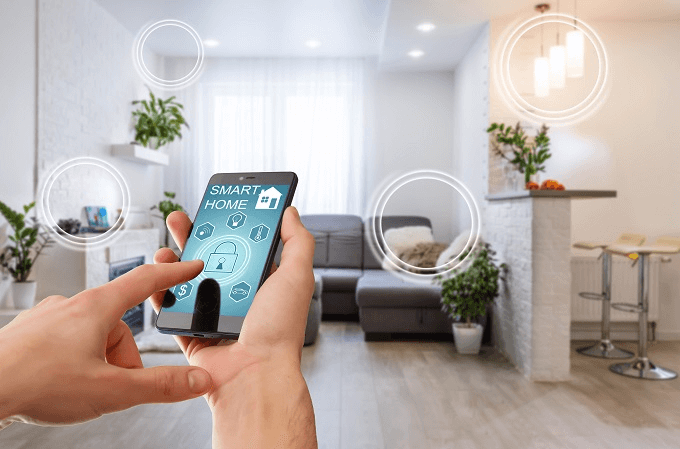In today's fast-paced world, technology continues to transform our lives, making everyday tasks more manageable. One area where technology has made significant strides is in creating smart homes for disabled persons. These homes are designed to enhance accessibility and provide a more comfortable living environment for individuals with disabilities.
The concept of smart homes for disabled persons is not just about convenience; it's about empowering individuals to live independently and safely. By integrating advanced technologies, smart homes offer solutions that cater to the unique needs of disabled individuals, allowing them to navigate their homes with ease. In this article, we will explore how smart homes are revolutionizing accessibility for disabled persons and the benefits they bring to homeowners and businesses.

Understanding Smart Homes
Before diving into the specifics of smart homes for disabled persons, it's essential to understand what a smart home is. A smart home utilizes internet-connected devices to automate and control various functions, such as lighting, heating, security, and entertainment systems. These devices can be controlled remotely through smartphones, tablets, or voice commands, offering users convenience and flexibility.
For a more detailed guide on setting up a smart home, you can check out this smart home devices setup guide. Additionally, this Internet of Things in Homes article provides insights into the integration of IoT devices in smart homes.
Key Features of Smart Homes for Disabled Persons
Voice-Activated Assistants
One of the most significant innovations in smart homes is the use of voice-activated assistants like Amazon Alexa, Google Assistant, and Apple Siri. These devices allow users to control various aspects of their homes using voice commands. For disabled individuals, this feature is particularly beneficial as it eliminates the need for physical interaction with devices.
Automated Lighting and Climate Control
Smart homes can automate lighting and climate control systems, ensuring that the home environment is always comfortable. Automated systems can be programmed to adjust based on the time of day or the user's preferences. This feature is especially useful for individuals with mobility issues, as it reduces the need to manually adjust switches or thermostats.
Security and Safety Features
Ensuring the safety and security of disabled individuals is a top priority in smart homes. Advanced security systems with cameras, motion sensors, and smart locks provide real-time monitoring and alerts, keeping homeowners informed and safe. Moreover, smart smoke detectors and carbon monoxide detectors can alert users and emergency contacts in case of an emergency, ensuring a quick response.
Accessibility and Convenience
Smart homes for disabled persons are designed with accessibility in mind. Features like automated doors, adjustable countertops, and smart appliances enhance convenience and ensure that individuals can perform daily tasks independently. For more examples of smart home automation, visit this smart home automation examples article.
Benefits for Homeowners and Businesses
The benefits of smart homes extend beyond individual users. Homeowners and businesses can also reap the rewards of investing in smart technologies. For homeowners, smart homes can increase property value, reduce energy consumption, and enhance overall comfort. Businesses, on the other hand, can benefit from improved efficiency and accessibility, making their premises more inclusive for employees and customers with disabilities.
For more insights on how smart homes are evolving, check out this evolution of smart homes article.
Challenges and Considerations
While the benefits of smart homes are numerous, there are also challenges and considerations to keep in mind. The initial cost of installation and the need for ongoing maintenance can be significant barriers for some individuals. Additionally, ensuring the security and privacy of personal data is crucial, as smart homes rely on internet connectivity and data collection.
It's essential for homeowners and businesses to work with experienced professionals to ensure that their smart home systems are secure and tailored to their specific needs. For those new to smart home installation, this beginner's guide to smart home installation provides valuable insights.
Conclusion
Smart homes for disabled persons are transforming the way individuals with disabilities live and interact with their surroundings. By integrating advanced technologies, these homes offer unparalleled accessibility, safety, and convenience, empowering individuals to lead independent and fulfilling lives. As technology continues to advance, the potential for smart homes to enhance the quality of life for disabled individuals will only grow, making them an essential investment for both homeowners and businesses.

FAQ
Q: What are the main benefits of smart homes for disabled persons?
A: Smart homes provide enhanced accessibility, safety, and convenience, allowing disabled individuals to live independently and comfortably. They also offer benefits such as increased property value and reduced energy consumption for homeowners.
Q: Are smart homes expensive to install and maintain?
A: While the initial cost of installation can be significant, the long-term benefits and potential energy savings often offset these costs. It's important to work with experienced professionals to ensure proper installation and maintenance.
Q: How can businesses benefit from smart home technologies?
A: Businesses can improve efficiency and accessibility by incorporating smart technologies, making their premises more inclusive for employees and customers with disabilities.

